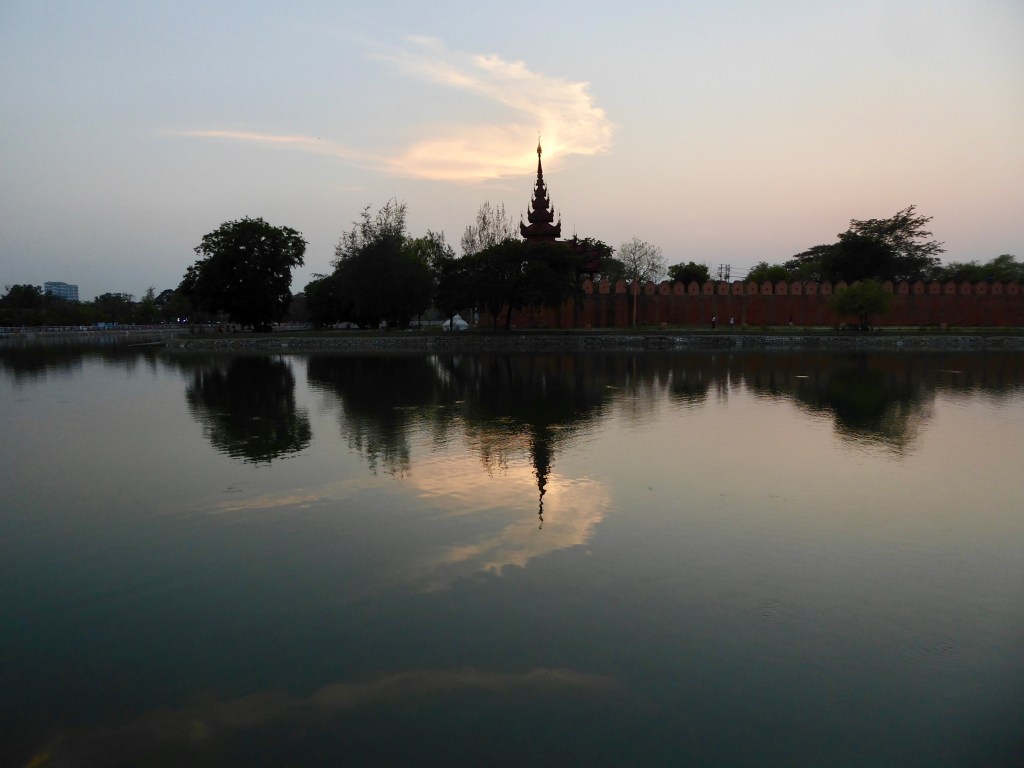
On 26 April 1942, Hitler passed a law that gave him absolute power, of life and death, over every citizen of Nazi Germany. The law read
“In the present war, in which the German people are faced with a struggle for their existence or their annihilation, the Fuehrer must have all the rights postulated by him which serve to further or achieve victory. Therefore—without being bound by existing legal regulations—in his capacity as Leader of the nation, Supreme Commander of the Armed Forces, Head of Government and supreme executive chief, as Supreme Justice and Leader of the Party—the Fuehrer must be in a position to force with all means at his disposal every German, if necessary, whether he be common soldier or officer, low or high official or judge, leading or subordinate official of the party, worker or employer—to fulfil his duties. In case of violation of these duties, the Fuehrer is entitled after conscientious examination, regardless of so-called well-deserved rights, to mete out due punishment and to remove the offender from his post, rank and position without introducing prescribed procedures.”
This, then is the ultimate aim of power, the concentration of law, arbitrary justice in the employ of one person with the intent to determine who shall live or who shall die, without recourse to any impediment. My interest is not in the architecture of power, not the gradations of influence garnered and dispensed by courtiers, or the motley crew of ‘yes-men’ and purveyors of gossip and intrigue who make power incisive and deadly, but in the efflorescence of power itself, not disguised but explicit and brutal. In other words, it is not the William Barrs, the Pompeos, the Cummings or any other enablers of power that interest me. At least not just yet. But, the consolidation of power in the singular individual with the purpose of accretion, malignant and lethal, and ultimately pathological and fatal too, to the individual.

In this COVID19 season we have seen the emanations of power, the signs are everywhere to be read like runes, disposed to interpretation if we are willing. Where, even though the signs are obscured by bumbling ineptitude or by a deteriorated language that falters and stutters for meaning, the aim to gather and concentrate power in the executive is plain to see. So, we have the glaring changing of the rules in Russia, the serried ranks of the monotonous and unanimous, voting to change another set of rules in the Imperial City, and the gangsterism posing as legitimate power in the South Seas. And insidious and ruinous, the manipulation of due process to pervert law in Hungary.
This deviancy of power, excessive and unchecked, has its display mechanisms. A good way to think of this is to imagine a peacock with its luminous feathers, glossy and shimmering in the sun, fanned out in rude vanity. That is its display. The issue for the peahen is to determine how far this display is a true indicator of the cock’s worth. Has it expended too much energy in turning out the glossy display that its sperm is enervated and merely a thin gruel? Or, is the display a true reflection of its powers? There is a sense in which even a peacock can overextend itself. Its tail might grow so large that the cock falls over or the poor bird might simply die of exhaustion. There is always the possibility that an empty barrel makes the most noise. Unlike, that is, still waters that run deep.
So, what are the display mechanism of despotism? The simplest yet most complex is the parading of instruments of terror within the kingdom. Armoured vehicles, ballistic missiles with nuclear warheads, militarised aircraft flying over, goose stepping infantry in jackboots, marching rank upon rank, these are the instruments of terror. These are, at its most basic, symbols of power to deter foreign enemies from contemplating war. But, in fact these are naked displays of instruments of terror, within civil space, a reminder to the citizen of the power of Caesar. It is not difficult to understand why in Republican Rome, the generals were not allowed to bring their armies into the city.

Here we have our peacock, striding out in the sun, fanning out its tail, its neck stretched out, wings puffed out. How far are we to take the display of power as pointing to strength, to a sign of a sure pedigree? If power requires such exigencies to affirm its strength, is it as sure of itself as it wishes to project? The more excessive its display, the less persuasive it is and the less secure power feels. The end result is an instability of the structures of power, pointing to an imminent demise. Swiping at young, peaceful protesters in Hong Kong is hardly a sign of surefootedness.
In some jurisdictions, the displays are concealed. It took the George Floyd crisis for the militarisation of the police to become evident in the USA. Deployments of terror had to date, been overseas, softened and seemingly constrained by its methods, its justifications and the use of propaganda to make palatable “Shock and Awe”. Nonetheless, terror is terror, and killing is always killing even when covert or executed from a safe distance with the use of drones. Extra-judicial killing is precisely that, killing without recourse to impediments. But it is the militarisation of civil systems of law and order, the grotesque arming and deployment of the same instruments of terror that is used in Afghanistan for use in Washington that makes explicit the nature of power everywhere. As the Yoruba say, Saturday’s chemise is showing underneath Sunday’s skirt! Brutal force without any of the sugar coating is the viper flashing its fangs, and once seen never forgotten. The cost to the republic is that its methods are now revealed and the implicit contract with the citizen, at the very least, has been seen for what it is, mere sham.
As for parodies of power, endlessly comical but nevertheless deadly serious. So, we have His Excellency President for Life, Field Marshall Al Hadji Doctor Idi Amin Dada VC., DSO., MC., CBE. Lord of all Beasts of the Earth and Fishes of the Seas and Conqueror of the British Empire in Africa in General and Uganda in Particular, etc., etc. His portraits showing him bejewelled in medals and awards. And, His Imperial Majesty Bokassa I, Apostle of Peace and Servant of Jesus Christ, Emperor and Marshall of Central Africa and possessing 4 dynastic honours: Sovereign Knight Grand Cordon with Collar of the Imperial Order of Bokassa, Sovereign Knight Grand Cordon of the Imperial Order of Central Africa Merit, Sovereign Knight Commander of the Imperial Order of Agricultural Merit, 1st Class, Sovereign Knight of the Imperial Decoration of Recognition 1st Class. These parodies of power dressed and addressed, as power incarnate, pompous, bombastic and brutal, yet with cunning, cynicism, enacting what others dream of but ultimately failing as all pathologies of power do.
Just to make the point, these grotesque portraits of power are not the preserve of African tyrants. The spectacle of power, the pomposity and arrogance of titles, see above Hitler’s many titles and of course heraldry, shimmering crowns, vulgar and undue opulence, these are all part of the parody of power, normalised by charm and propaganda and accepted as worthy insignias of wealth and pomp. The vast majority looking on, mystified and simply too exhausted from suffering and disease to comment or applaud.

What are the mechanisms of this deviancy of power? How does it gain traction and sustain its imposition of tyranny? Who aids and abets the canker that kills? We do not need to go to the past to see how power is nurtured and sustained by the collaboration of self-seeking individuals, the press and the profiteering classes, and of course the mass of people led and misled to first hate and then to despise and finally to kill whilst they themselves are mere fodder in the mills of power. There are names, there are always names, but they know who they are in our time, and everyone else knows who they are too.
In Gabriel Garcia Marquez’s (1927-2014) In Evil Hour, a slim novel, ostensibly about a short interlude in a town where a lampooning crisis took place, but which actually examines how central authorities, in a dictatorship, co-opt minor characters, in the duty of killing and of terror. The mayor, who is also a lieutenant and later a general deputises criminals and arms them to assist in the reign of terror. They kill, shooting a young boy through his anus so as to leave no visible mark of their murderous assault on him. This is a metaphor for how to kill without leaving any mark. You need look no further than this COVID19 crisis, in some jurisdictions, the dereliction of duty has resulted in mass dying, killing by negligence in any language, but there’s no mark tracking back to the responsible public figures. But, the real message of this novel is that terror only succeeds to the degree that ordinary people, and the elites, in this case the doctor, the judge, the cleric, and the administrator collude with systematic terror by their silence, their indifference. But perhaps more worrying is the degree to which social and emotional adjustments are made to accommodate and to adapt to grievous harm to others.

And, the attitude to death, the dying of many is best described in Marcus Licinius Crassus’s (115 BC-53BC) approach to death. Crassus put down the slave uprising that was led by Spartacus in the Battle of the Silarius River. After his decisive victory, 6 thousand slaves were crucified along the Appian Way and their bodies left rotting in the open air. It is said that so many were put to death that Crassus’ triumphal entry into Rome was meagre as he had slaughtered practically all the captives, who would otherwise had marched in his triumphal entry into Rome. This attitude to death, the utter disregard for life, even in victory, is another sign of the pathology of power.
In Hitler’s case, it is the battle in the East, against Russia, that best illustrates his contempt for life, other people’s life, that is. He was adamant that his army not retreat even when it was plain that it had lost its way in Russia. The death toll was described as follows by William L Schirer
“Step by step and sometimes more rapidly throughout that grim winter the German armies, which had planned to celebrate Christmas in Moscow, were driven back or forced by Russian encirclements and breakthroughs to retreat. By the end of February they found themselves from 75 to 200 miles from the capital. By the end of that freezing month Halder was noting in his diary the cost in men of the misfired Russian adventure. Total losses up to February 28, he wrote down, were 1,005,636, or 31 per cent of his entire force. Of these 202,251 had been killed, 725,642 wounded and 46,511 were missing. (Casualties from frostbite were 112,627.) This did not include the heavy losses among the Hungarians, Rumanians and Italians in Russia.”

The relationship of pathological power and the sanctity of life is a complex one. Elias Canetti (1905-1994) in his extraordinary book Crowds and Power hunts down what power does in the context of death and dying. He makes the point, at once, obvious, that the phenomena that result in a heap of corpses are battle, mass suicide and epidemics. He goes on
“The aim of battle is a heap of enemy dead. The number of living enemies is to be reduced so that the number of one’s own people become comparatively greater […] In mass suicide this activity is turned against one’s own people […] In an epidemic the result is the same as in mass suicide, but it is not voluntary and seems to have been imposed from outside by some unknown power. The goal takes longer to reach and people live in an equality of terrible expectation, all ordinary relationships are abrogated […]”
Canetti’s aim though is to understand how power comprehends survival. Does a pathology of power, render all deaths of equal value, whether it be that of a citizen or not? In other words, does the nationality of a heap of corpses matter? Canetti’s answer, his insight into the icy chill of the entrails of a pathology of power was to recognise that power is only really committed to itself. As he put it
“The moment of survival is the moment of power. Horror at the sight of death turns into satisfaction that it is someone else who is dead. The dead man lies on the ground while the survivor stands. It is as though there had been a fight and the one had struck down the other. In survival, each man is the enemy of every other, and all grief is insignificant measured against his elemental triumph […] Few readers can have finished the chapters on the survivor without some feeling of disgust. But it was my intention to hunt him out in all his hiding places and show him for what he is and always has been. He has been glorified as a hero and obeyed as a ruler, but fundamentally he is always the same. His most fantastic triumphs have taken place in our own time, among people who set great store by the idea of humanity. He is not yet extinct, nor even will be until we have the strength to see him clearly, whatever disguise he assumes and whatever his halo of glory. The survivor is mankind’s worst evil, its curse and perhaps its doom. Is it possible for us to escape him, even now at this last moment?”
This urgent call to our sensibility, uttered soon after World War II is even more urgent today. COVID19 crisis has only unmasked what was barely concealed. We can all see how the multiple deaths in England and the USA, matched by few other countries, accompanied as they are by a lack of remorse in government, an absolute lack of empathy and appropriate contrition, and perhaps an ill-concealed triumphalism that has described death and tragedy as ‘we are doing great’ or words to that effect! Then the unimaginable contemplation of actually putting people in harm’s way- “take it on the chin”. And, in the Great Leader’s inimitably callous style “It’s a beautiful thing to see nurses and doctors running towards death!”
Finally, what kind of person is susceptible to a pathology of power? And here I will leave you with Hitler’s own words that is echoed innumerable times over in our own time, a hauntingly familiar refrain that is as laughable as it is chilling
“I had a clear recognition of the probable course of historical events [he said in discussing his early struggles] and the firm will to make brutal decisions… As the last factor I must name my own person in all modesty: irreplaceable. Neither a military man nor a civilian could replace me. Assassination attempts may be repeated. I am convinced of the powers of my intellect and of decision… No one has ever achieved what I have achieved… I have led the German people to a great height, even if the world does hate us now… The fate of the Reich depends only on me. I shall act accordingly.” William L Shirer The Rise and Fall of the Third Reich.

Photos by Jan Oyebode


“The moment of survival is the moment of power. Horror at the sight of death turns into satisfaction that it is someone else who is dead. The dead man lies on the ground while the survivor stands.”
I read these words with a sudden understanding of what always seemed to be inexplicable to me, who has never been to war, never but once reached out in anger and then pulled back in deep remorse. It is the triumphal cry of battle, from our warrior ancestors if we had them, or from the battles we were taught about, reveling in the fact that “our side wins”.
This powerful and disturbing essay, that brings into question what it means to be complicit in a culture where power becomes the fulcrum upon which everything balances had the counterpoint of interludes of visual tranquility that helped me feel hope amidst sorrow for our beleaguered of COVID and misrule.
Thank-you for speaking your truth, and speaking it beautifully. From literature and from life, your words are ones of insight and wisdom.
Carolyn
As ever I’m grateful for your comments. These matters speak to the darkest most vicious aspects of human life but we are also capable of the most wondrous and life affirming actions. So there’s always hope that we can rise above the worst in us.
Femi
“But, the real message of this novel is that terror only succeeds to the degree that ordinary people, and the elites, in this case the doctor, the judge, the cleric, and the administrator collude with systematic terror by their silence, their indifference. But perhaps more worrying is the degree to which social and emotional adjustments are made to accommodate and to adapt to grievous harm to others.”
Thank you sir for this article.
Ayomipo
Thanks for reading.
Femi